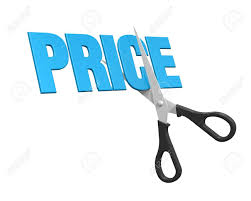Someone has been prospecting me, trying to provoke me to respond and take a call. In reality, if he spent two minutes looking at our company and doing a little research, he would realize we are a terrible prospect for what he is selling.
But he hasn’t done that, and continues to blindly send emails to me, provoking a conversation.
The first two emails were product pitches. In the first email, he wanted to invite my whole team to a virtual lunch, giving us a demo about his product. Then he went on to talk about his product, without even trying to understand whether we even cared.
His second email was, “Did you receive my first email?” Sigh…..
His third email was, “One more thing to add….” Actually, he had several things to add. First he addressed the 100’s of systems we have to update in making people changes in our company (We only have one very simple system. I called a friend who runs a multi-billion company, they have 5 systems)
But then he went on: “I should mention–even though I hate talking about price–that all our customers report a cost savings with [our product]. I.e. you can get more work done, faster, without having to spend more than you do today….”
Perhaps, I’m being nit-picky, but this sales person is mixing three important concepts: price, cost, productivity. It’s clear, in those two sentences, that he doesn’t understand any of them.
The price, is what the customer pays for your product, whether it is the outright purchase price or the monthly subscription.
The cost includes all the costs in implementing the solution/change. The price of your product is part of that, but all the implementation costs, any staffing, operational costs, other software, equipment, and so forth are all parts of the cost. In the “old days,” we had a concept called Total Cost Of Ownership (TCO, if you like acronyms). The TCO looked at the total costs of the project, not just what we are charging. In many cases, our the price/cost of our product is the smallest part of the cost the customer incurs in implementing a project. Sometimes, even if the price/cost of our solution was $0, the TCO may be prohibitive, preventing us from moving forward.
The real issue, is the business value/case–for example the productivity improvements the customer achieves as a result of implementing the solution.
In this case, if the solution this guy is selling frees up so much time, that we can recapture that time in doing other things, we may have achieved a great productivity improvement. We might need fewer people, reducing TCO, we might be able to divert those people into customer service activities, that improve retention or growth. We might be able to divert those people into generating revenue, which creates a great ROI.
Price never equates to TCO. Price never addresses the business return, productivity improvements, or economic value we produce with the customer.
Somehow, we care about price, consequently making the decision about price. Our customers care about TCO, ROI, Productivity, Business Value. We are far better off talking about what our customers care about, rather than focusing on price.

Leave a Reply